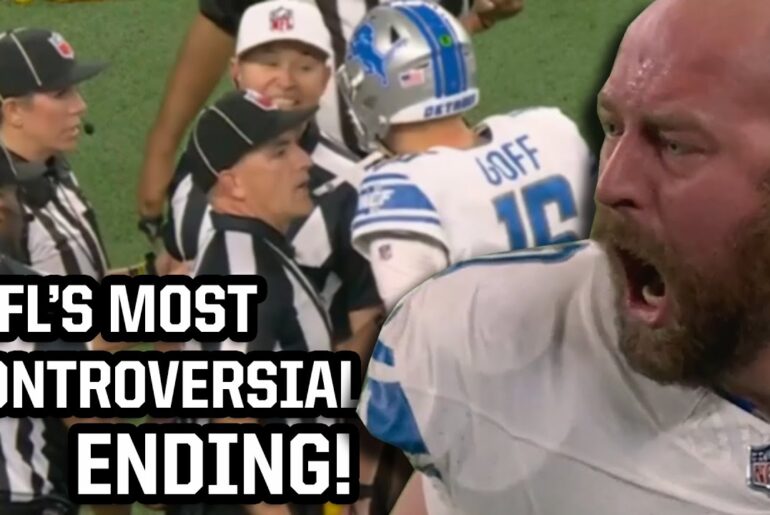The first round of the playoffs has left fans in awe with thrilling moments and unexpected twists. One game, in particular, caught the attention of many, not only for its intensity on the field but also for a controversial penalty that led to a critical decision. In this article, we will delve into the details of the Bosa penalty, the subsequent choice to go for two, and its impact on the outcome of the game.
The Climactic Moment
As the game progressed, the team found themselves trailing by a significant margin. However, their relentless effort paid off, and they managed to stage an impressive comeback. With the score at 10 points behind, they orchestrated a play that would potentially close the gap even further. It all came down to a decisive throw into the end zone.
The Bosa Penalty Controversy
Amidst the chaos and excitement, a moment of frustration unfolded involving Joey Bosa, a prominent player on the team. Bosa’s emotions boiled over, possibly due to the belief that he had jumped early or been held during the play. This contentious situation raised questions about his intentions and the officiating bias against him as an \”Ohio guy.\”
In a fit of anger, Bosa removed his helmet and slammed it onto the ground, reminiscent of Heath Ledger’s character in \”The Patriot\” with his disheveled appearance. The coach swiftly offered Bosa a replacement helmet, but the player rejected it, having already vented his frustration. Sitting down to catch his breath, Bosa’s demeanor evoked imagery of a young George Washington during the Revolutionary War—determined and resolute.
The Consequences of Bosa’s Actions
However, Bosa’s outburst did not go unpunished. The rules clearly state that throwing a helmet onto the field of play results in a penalty. Consequently, Bosa received a penalty for unsportsmanlike conduct, further exacerbating the team’s situation.
This turn of events had a tangible impact on the game. The penalty caused the team to move from the two-yard line to the one-yard line. The change in field position prompted an important decision—one that would determine the team’s strategy for the upcoming play.
The Decision: Going for Two
In a post-game interview, Doug Peterson, the team’s head coach, was asked whether they would have chosen to go for a two-point conversion without the penalty. He admitted that, without the extra yard gained from the penalty, the decision to attempt a two-point conversion would have been less likely. This insight shed light on the team’s thought process and the significance of the penalty’s consequences.
The rationale behind going for two points was twofold. Firstly, being one yard closer to the end zone increased their chances of success. Secondly, achieving a successful two-point conversion would elevate their score to 28, allowing them to win the game with a field goal instead of requiring a touchdown.
The Math Behind the Decision
For those less mathematically inclined, let’s break down the scenarios. Initially trailing by four points, if the team had chosen to kick an extra point, they would have narrowed the gap to three points. In this case, a field goal would only result in a tie, necessitating a touchdown to secure victory.
However, by going for a two-point conversion, there were three possible outcomes:
- Missed Conversion: If the two-point conversion was unsuccessful, the team would remain at 26 points. In this scenario, they would still need a touchdown to win the game.
- Successful Conversion: If the two-point conversion was successful, the team would increase their score to 28 points. With this advantage, a field goal would be sufficient to secure victory.
- Converted Field Goal: In the rare instance that the team successfully converted a two-point conversion and subsequently kicked a field goal, they would reach 29 points, further securing their win.
Based on these calculations, it becomes clear that the team had a higher probability of winning by attempting a two-point conversion rather than settling for an extra point kick.
The Climactic Moment Revisited
Following the penalty and subsequent decision to go for two, the team lined up for the critical play. With the ball snapped, Lawrence, the team’s quarterback, stretched out towards the end zone, a mere fraction of a yard away. Despite initial doubts regarding his success, camera footage captured his successful touchdown, freezing the moment in time.
Meanwhile, Bosa, on the sideline, still exuded a George Washington-like aura, with his determination and the untamed state of his hair. Witnessing the successful conversion, he rallied his teammates, aware that their mission was far from over.
The Final Countdown
The team’s efforts continued as they aimed to secure victory by stopping their opponents with a three-and-out series. After a fierce defensive stand, the opposing team faced a crucial fourth down with only one yard to go. However, they managed to execute a clever play, gaining enough ground to enter field goal range.
With time winding down and tensions running high, the kicker, with unwavering confidence, stepped up to the plate. As the ball sailed through the air, it became evident that victory was within their grasp. The field goal was good, and the Jaguars emerged triumphant.
Conclusion
In conclusion, the Bosa penalty and the subsequent decision to go for two had a significant impact on the outcome of the game. Despite the controversy surrounding Bosa’s actions, the team recognized the strategic advantage presented by the penalty and seized the opportunity. Their calculated decision, supported by mathematical reasoning, propelled them closer to victory.
This game will be remembered not only for its thrilling moments on the field but also for the interplay between emotions, strategic choices, and the importance of seizing opportunities in high-stakes situations.



